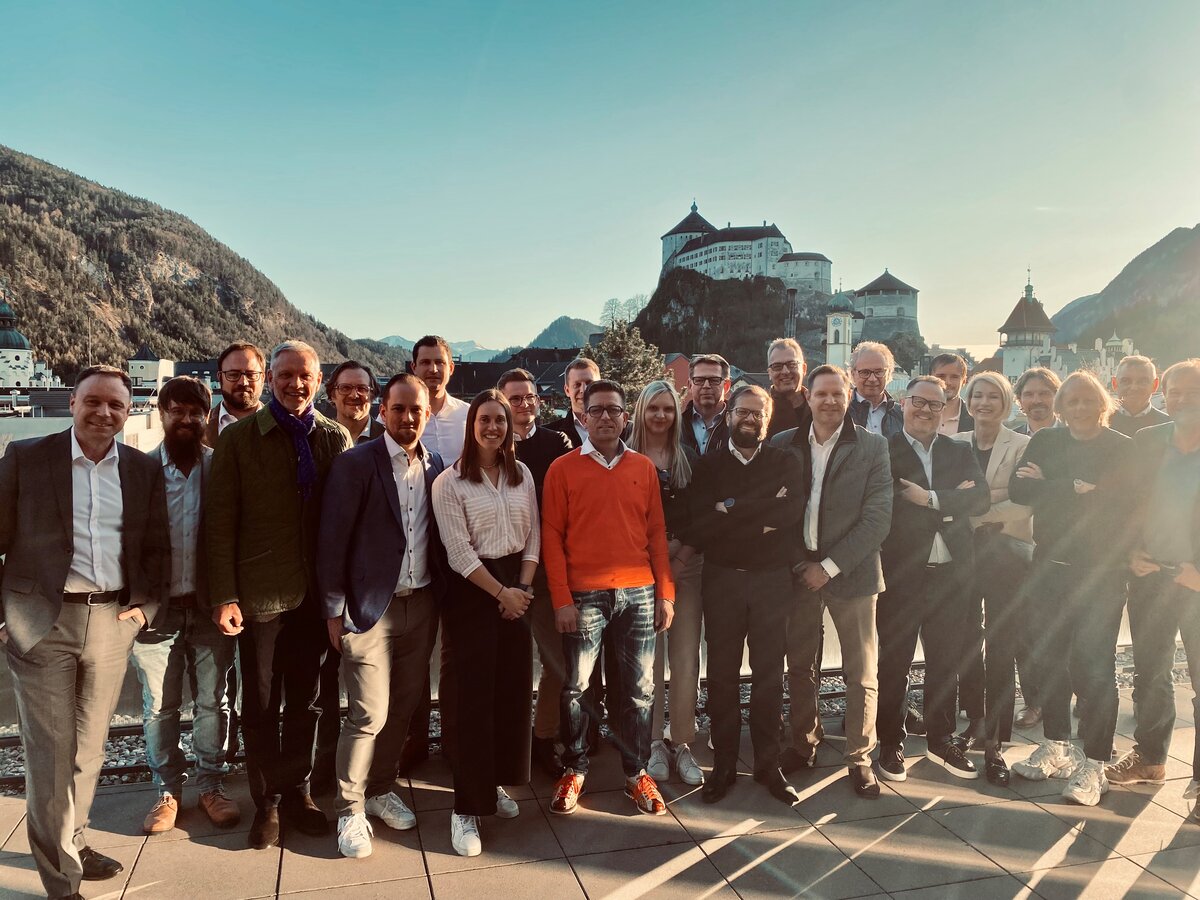REVIEW: WORKSHOP FOR AI & DIGITAL BUSINESS MODELS
- 01.04.2025
- Business School

The participants of the AI & Digital Business Models workshop met again at the Kufstein University of Applied Sciences to deepen their knowledge in the field of restructuring and reorganisation.
On March 20th and 21th, 26 participants of the university-certified Certified Turnaround Professional course met once again at the Kufstein University of Applied Scineces to take an in-depth look at the topics of artificial intelligence (AI) and business model innovation in the digital age.
In addition to an introduction to the basic applications of generative AI, the first day's programme also included the topic of creating restructuring reports. Lecturer Prof. (FH) Dipl.-Ing. Thomas Schmiedinger, PhD, University Professor of Mechanical Engineering and Digitalization, spoke about market research and competitive analysis and gave an insight into the processing of large amounts of data in the context of financial analysis. The expert also spoke about automated plausibility checks and support in writing expert texts.
One of the many key takeaways from the first day for the participants was that AI makes it easier to prepare restructuring reports, but that the statements in these tend to be mediocre. The software tool can also support the analysis of financial data and make statements based on probabilities - which in turn helps to structure large amounts of data. An AI-supported market analysis can be carried out via Statista or NotebookLM and then summarised: The use of generative artificial intelligence makes work even easier.
WHAT IS A DIGITAL BUSINESS MODEL?
The second day focussed on the question of what digital business models are and how they differ from conventional approaches. Dr Stefan Wolpert from nexum AG got to the bottom of this together with the participants. Basically, a business model is the bridge between corporate strategy and business process that requires constant adaptation, according to Wolpert. This is important, as traditional business models are increasingly coming to nothing. To avoid this, you have to think from the customer's perspective - something that very few companies are currently doing; they are still too focussed on the technological aspect.
So what is a digital business model? By no means a blueprint of conventional business models that are simply implemented on a computer, but rather include a large number of additional factors. An elementary component of digital business models, for example, is data-based customer loyalty in order to fulfil personalised needs. Global reach without a physical presence also plays an important role. Added to this is the high scalability; only the development of the business models costs money.
Different types of digital business models:
- E-commerce (Otto)
- Subscription models (Microsoft)
- Usage-based (ams)
- Platform models (airbnb)
- Freemium models (Spotify)
- Data-driven models (Google)
- Digital ecosystems (Apple)
Of course, digital business models also have disadvantages - the high demands on data utilisation and, above all, data protection and cyber security are just two of them. Finding suitable skilled labour is also a challenge for companies.
A menu that can be called up via a QR code in a restaurant is therefore not a digital business model. Only when the digital solution generates significant added value are customers prepared to pay for it.
"Due to the high demand, there will be another date for the workshop for AI & digital business models on 13 and 14 November 2025," says Prof. (FH) Dr Markus W. Exler, Head of the Institute for Cross-Border Restructuring and initiator of the workshop and course. The costs amount to 1,250 euros including the networking evening. Registration is possible via the website. "The workshop is the ideal addition for all those who want to supplement their knowledge of restructuring and reorganisation with further, current aspects," continues Exler.
